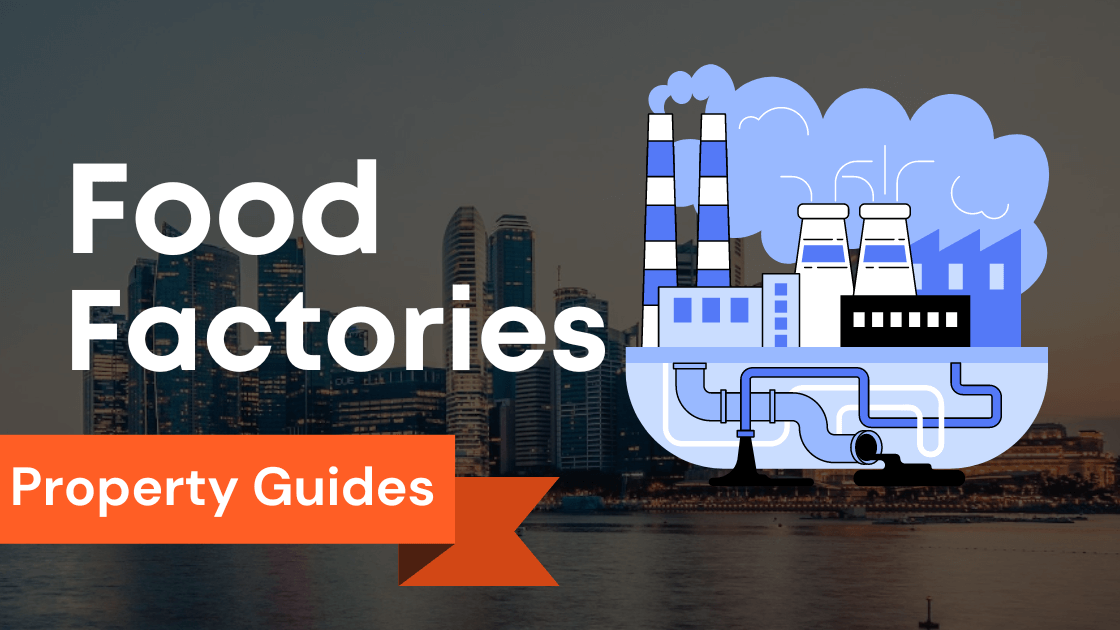
B2 Industrial Step into the captivating world of types of industrial, where zones B1 and B2 define the beating heart of Singapore’s economic landscape.
These classifications resonate with unique purposes and potential, like two distinct symphonic notes.
B1, the realm of light industries, embraces versatility, blending industrial and commercial activities in a harmonious dance.
On the other hand, B2, the fortress of heavy industries, stands firm with an unwavering focus on industrial might.
Key Takeaways
- B1 vs. B2 Classification: Industrial properties in Singapore are categorized into B1 and B2 zones, with B1 for light industries and B2 for heavy industries and special activities.
- Land Use Flexibility: B1 properties offer more flexibility in land use, allowing a mix of industrial, ancillary, and limited commercial activities. B2 properties are strictly for industrial use.
- Location Planning: B1 zones are closer to residential areas for better accessibility, while B2 zones are located further away due to the nature of their activities, reducing impact on residents.
- B1 Features: B1 properties are suitable for light industries like manufacturing, assembly, research, development, and showrooms due to their flexibility.
- Industrial Zones’ Role: Industrial zones are carefully planned to facilitate logistics, transportation, and access to markets while ensuring efficient land use.
- Government Regulations: The Urban Redevelopment Authority (URA) sets regulations for industrial properties, covering land use, building specifications, uses, and buffers.
- Property Investment: Well-planned industrial zones with good infrastructure attract demand, leading to increased property values and rental rates, making them attractive investments.
- Importance of Business Parks: Business parks enhance collaboration, innovation, and productivity, offering attractive working environments with amenities and networking opportunities.
- Change of Use: Changing industrial property use involves complex processes, but it offers opportunities for businesses to adapt and optimize their spaces.
- URA Guidelines: The URA has established specific regulations and guidelines for industrial properties, covering factors like land use, allowable activities, and nuisance buffers.
Exploring Different Types of Industrial Properties: B1 vs. B2
In Singapore, industrial properties are categorized into different zones, with B1 and B2 being the main classifications.
B1 industrial properties are primarily meant for light industries, while B2 industrial properties are aimed at heavy and particular sectors.
The distinction between B1 and B2 lies in the activities allowed within each zone.
Understanding the Difference between B1 and B2 Industrial Properties
Regarding land use, B1 industrial properties are more flexible than B2 industrial properties.
B1 properties can have a mix of industrial, ancillary, and even limited commercial activities.
On the other hand, B2 industrial properties are strictly for industrial use and do not allow for commercial activities.
The restrictions on B2 properties are in place to ensure a conducive environment for heavy industries.
Comparing Singapore’s B1 and B2 Industrial Zones
Regarding the location of B1 and B2 industrial zones, they are strategically planned to meet the specific needs of different industries.
B1 zones are usually located closer to residential areas and amenities, allowing for better accessibility for workers and customers.
B2 zones, on the other hand, are situated further away from residential areas due to the heavy and potentially disruptive nature of the activities allowed in these zones.
This ensures minimal impact on nearby residents.
Key Features and Usage of B1 Industrial Properties
B1 industrial properties offer a wide range of features and usage options.
These properties suit light industries such as manufacturing, assembly, research and development, and even showroom activities.
The flexibility of B1 properties makes them attractive to businesses looking for a versatile space that can accommodate a variety of industrial activities.
Understanding Singapore’s Industrial Zones and Development
Singapore’s industrial zones are crucial to the country’s economic development.
The government has implemented regulations and policies to regulate industrial action and ensure the efficient use of industrial space.
Overview of Industrial Zones in Singapore
Singapore’s industrial zones are carefully planned to meet the needs of different industries.
These zones are strategically located to facilitate logistics, transportation, and access to critical markets.
The zones are designed to provide an optimal environment for industrial operations, ensuring the smooth flow of goods and services.
Government Regulations and Policies for Industrial Development
The government plays a significant role in regulating industrial development in Singapore.
The Urban Redevelopment Authority (URA) is responsible for setting guidelines and regulations for industrial properties.
These guidelines cover land use, building specifications, allowable uses, and nuisance buffers.
The URA’s rules are in place to ensure that industrial activities do not negatively impact the surrounding environment and neighboring properties.
Impact of Industrial Zones on Property Investment
The presence of well-planned industrial zones positively impacts property investment in Singapore.
Industrial properties in strategic zones with good infrastructure and transportation links attract higher business demand.
This high demand can increase property values and rental rates, making industrial properties a lucrative investment option for individuals and companies.
The Importance of Business Parks in the Industrial Landscape
Business parks are an integral part of Singapore’s industrial landscape.
These purpose-built developments offer various advantages for industrial companies looking for a conducive working environment.
Exploring the Concept and Purpose of Business Parks
Business parks are specialized industrial developments that provide a mix of industrial, office, and commercial spaces.
These parks promote collaboration, innovation, and productivity among businesses.
They often feature well-designed office spaces, ample parking facilities, landscaped surroundings, and amenities like cafes and gyms.
Advantages of Business Parks for Industrial Companies
Business parks offer several advantages for industrial companies.
Business parks’ well-maintained environment and professional image make them attractive to clients and customers.
The presence of amenities and recreational facilities within the parks enhances the overall well-being of employees, contributing to higher job satisfaction and productivity.
Additionally, the proximity to other businesses and industry players within the parks promotes networking and collaboration, leading to potential business opportunities.
Current Trends and Developments in Singapore’s Business Park Sector
The business park sector in Singapore is continuously evolving to meet the changing needs of businesses.
There is a growing emphasis on sustainability and green initiatives in the design and development of business parks.
Developers are incorporating eco-friendly features such as energy-efficient buildings, green spaces, and sustainable transportation options.
These trends reflect the increasing importance of environmental sustainability in the industrial sector.
Navigating Change of Use in Industrial Properties
Change of use refers to transforming an industrial property from one specific purpose to another.
Navigating the change of use process can be complex, but it offers opportunities for businesses to adapt and optimize their industrial properties.
Understanding Change of Use Regulations and Process
The URA governs the change of use regulations and processes for industrial properties in Singapore.
Businesses seeking to change the use of their industrial properties must comply with specific guidelines and obtain the necessary approvals.
The URA conducts thorough assessments to ensure that the proposed change of use aligns with the overall planning objectives and does not adversely affect the surrounding areas.
Factors to Consider when Changing the Use of Industrial Properties
Several factors need to be considered when considering a change of use for an industrial property.
These factors include the compatibility of the new service with the existing infrastructure, the potential impact on neighboring properties, and the market demand for the proposed use.
It is crucial to conduct a comprehensive feasibility study and consult with relevant authorities and experts to ensure a successful change of use application.
Case Studies on Successful Change of Use Applications
There have been numerous successful cases of change-of-use applications for industrial properties in Singapore.
These cases exemplify how businesses can adapt their properties to meet new market demands.
From repurposing old warehouses into trendy offices to transforming industrial buildings into creative spaces, these case studies demonstrate the potential for industrial properties to be reinvented and contribute to the vibrancy of the business landscape.
An In-depth Look at URA Regulations for Industrial Properties
The URA has established specific regulations and guidelines for industrial properties in Singapore.
These regulations are in place to ensure the efficient and responsible use of industrial spaces.
Overview of URA Guidelines for Industrial Properties
The URA guidelines cover various aspects of industrial properties, including land use, factory building options specifications, allowable uses, and nuisance buffers.
These guidelines are regularly updated to adapt to industries’ changing needs and industrial sector developments.
Businesses and investors must stay informed about the latest URA guidelines to ensure compliance and make informed decisions.
Understanding URA’s Nuisance Buffer and Allowable Uses
A nuisance buffer is a designated distance between industrial activities and sensitive land uses, such as residential areas.
The URA imposes a nuisance buffer to minimize the impact of industrial activities on nearby residents and to ensure a harmonious coexistence between industries and communities.
The allowable uses within industrial zones are strictly regulated to maintain the overall industrial character of the area while minimizing potential nuisances.
URA Regulations for Industrial Properties in Residential Areas
Industrial properties located in residential areas are subject to additional regulations and restrictions.
The URA has specific guidelines to address the potential conflicts between industrial activities and residential developments.
These regulations aim to balance preserving the integrity of residential areas and supporting industrial activities that can coexist harmoniously with the surrounding communities.
Ancillary Business Activities: Enhancing Industrial Value

Accessible business spaces
One of the critical features of B2 industrial properties is the provision of accessible business spaces.
These spaces are designed to cater to the needs of businesses that require easy accessibility for their clients and customers.
Accessible business spaces are typically located in areas with good transport links and easily accessible from major highways and transportation hubs.
Ancillary office spaces
In addition to providing accessible business spaces, B2 industrial properties also offer ancillary office spaces.
These office spaces serve as a place for businesses to conduct administrative, industrial property design options and managerial functions.
Ancillary office spaces are designed to enhance the efficiency and effectiveness of business operations by providing a conducive working environment for employees.
Core media activities facilities
Another exciting aspect of B2 industrial properties is the presence of core media activities facilities.
These facilities are designed to cater to businesses involved in media-related activities such as film production, audio recording, and multimedia development.
Core media activities facilities provide companies the necessary infrastructure and equipment for their creative endeavors.
Industrial Property Launches: Trends and Insights Property in Singapore
Industrial property transactions
Industrial property transactions are an essential indicator of the health and vibrancy of the industrial property market in Singapore.
Over the years, there has been a steady increase in industrial property types transactions, gross space, indicating a robust demand for industrial properties.
These transactions include purchasing and leasing industrial spaces by businesses looking to establish or expand their operations.
B2 property tax rates
One of the factors that businesses consider when investing in industrial properties is property tax rates.
B2 industrial properties are subject to tax rates different from those of other properties.
Companies must understand the B2 property tax rates and factor them into their financial calculations when making investment decisions.
Quantum of permissible activities
Regarding B2 industrial properties, the quantum of permissible activities is essential.
Through the National Environment Agency (NEA), the Singapore government has set guidelines and regulations on the types of activities allowed in B2 industrial properties.
Businesses must clearly understand the quantum of permissible actions to ensure compliance with the rules.
Unveiling the Predominant Industrial Usage in the City

Noise-free business units
In Singapore, noise-free business units are commonly found in B2 industrial properties.
These units are designed to cater to businesses that require a quiet and conducive environment for their operations.
Noise-free business units are typically equipped with soundproofing measures to minimize noise disturbance and ensure a productive working environment.
Hi-tech industrial facilities
As Singapore continues to position itself as a global hub for technology and innovation, hi-tech industrial facilities have become increasingly prevalent in B2 industrial properties.
These facilities are equipped with advanced technologies and state-of-the-art infrastructure to support businesses engaged in developing, developing, and manufacturing high-tech products.
Business park operations and services
Another common feature of B2 industrial properties is the presence of business park operations and services.
Business parks offer a range of amenities and services that cater to the needs of businesses, including food and beverage outlets, shopping centers, recreational facilities, and even childcare services.
This holistic approach to business park operations enhances the overall experience of tenants and creates a vibrant ecosystem for business growth.
Decoding the Difference Between B1 Industrial and B2 Industrial Properties Zones
B2 property for software development
B2 industrial properties are suitable for various activities, including software development.
With the increasing demand for technology solutions, businesses engaged in software development often require specialized spaces to carry out their operations.
B2 industrial properties provide the necessary infrastructure and flexibility to meet the unique requirements of software development businesses.
Conserved shophouse uses
In contrast to B2 industrial properties, conserved shophouses are often associated with B1 industrial zones.
These properties have been preserved due to their historical and architectural significance and are typically used for commercial purposes.
Conserved shophouses add character to the urban landscape and are favored by businesses that require a unique and aesthetically pleasing workspace.
B2 property zoning regulations
Zoning regulations play a crucial role in the planning and development of B2 industrial properties.
The Singapore government has established specific guidelines on the permissible uses and activities for B2 properties.
Businesses must know these zoning regulations to ensure their operations comply with the established guidelines.
The Role of Nuisance Buffers in Industrial Planning

Industrial land usage
Industrial land usage is carefully planned to balance the needs of businesses with environmental and community considerations.
Nuisance buffers, which refer to the minimum distance required between industrial properties and residential areas, are essential in industrial planning.
These buffers help mitigate potential nuisances such as noise, odor, and pollution from industrial activities.
Safety and nuisance buffers
Establishing safety and nuisance buffers is crucial in ensuring the well-being and quality of life of industrial property owners and neighboring residents.
These buffers help to create a safe and harmonious environment by minimizing potential conflicts and disturbances between industrial and residential areas.
Industrial property owners
Industrial property owners play a fundamental role in industrial properties’ successful and sustainable operation.
They are responsible for ensuring the compliance of their tenants with relevant regulations, maintaining the proper functioning of the property’s infrastructure, and fostering a conducive business environment for all stakeholders.
Exploring Allowable Trades in B1 and B2 Industrial Spaces
Understanding the Difference Between B1 and B2
Regarding industrial spaces, it is essential to distinguish between B1 and B2 categories.
B1 industrial spaces are mainly used for general industrial purposes, while B2 industrial spaces are intended for heavier industries.
B2 spaces are often found in areas zoned for industrial use and mainly for land-based manufacturing and clean industries.
Understanding the difference between B1 and B2 spaces is essential when deciding on the type of property to rent or lease.
Permissible Activities in B2 Industrial Spaces
B2 industrial spaces allow for a wide range of industrial activities.
These spaces suit heavy industries such as manufacturing plants, warehouses, and distribution centers.
They provide the necessary infrastructure and facilities for businesses involved in land-based manufacturing.
Knowing the permissible activities when considering B2 industrial spaces for your business is essential.
Common Trades in B1 Industrial Spaces
B1 industrial spaces are primarily used for general industrial purposes.
They are suitable for businesses involved in light or medium industries.
Some common trades in B1 industrial spaces include research and development facilities, printing shops, carpentry workshops, and vehicle workshops.
B1 areas offer a more flexible range of activities compared to B2 spaces.
Assessing Noise and Air Pollution in Industrial Areas

Environmental Factors to Consider in Industrial Zones
Industrial areas can have environmental implications such as noise and air pollution.
When choosing an industrial location, it is essential to consider the surrounding environment.
Factors such as proximity to residential properties, nuisance buffer distances, and the availability of clean industries should be considered.
Measuring Noise Levels in Industrial Areas
Noise pollution is a significant concern in industrial areas.
It is essential to measure the noise levels to ensure compliance with regulations and provide employees with a safe working environment.
Regular monitoring and mitigation measures should be implemented to minimize the impact of noise pollution.
Effects of Air Pollution on Industrial Workers
Air pollution can have adverse effects on the health of industrial workers.
Exposure to pollutants emitted by industrial activities can lead to respiratory problems, allergies, and other health issues.
Proper ventilation systems and air quality monitoring should be in place to protect the health of workers in industrial areas.
Leveraging Industrial Property Investments for Business Growth
Benefits of Investing in Industrial Properties
Investing in industrial properties can provide various benefits for businesses.
Industrial properties have the potential for high rental yields and capital appreciation.
They offer a stable source of income and can serve as a long-term investment for business growth.
Industrial properties also provide businesses the necessary space and infrastructure to operate efficiently.
Factors to Consider When Choosing an Industrial Property for Investment
When choosing an industrial property for investment, several factors should be considered.
These include location, transportation accessibility, demand trends, and the availability of supporting amenities such as warehouse proximity to MRT stations and internet service provider access.
A thorough analysis of these factors can help businesses make informed investment decisions.
Growing Your Business with the Right Industrial Property
The right industrial property rates can catalyze business growth.
It provides the necessary space, facilities, and infrastructure to support operations and expansion plans.
Industrial properties can accommodate various business needs, including manufacturing, distribution services, logistics, and e-commerce fulfillment centers.
Choosing the right industrial property can contribute significantly to the success of a business.
Industrial Property Tax Implications: B2 Property Rates

Understanding the Tax Rates for B2 Industrial Properties
Industrial property owners must be aware of their property’s tax implications.
B2 industrial properties are subject to specific tax rates.
Understanding these rates and how they are calculated is essential for property owners to manage their tax obligations effectively.
Factors That Affect the Property Tax of B2 Industrial Properties
Several factors can affect the property tax of B2 industrial properties.
These include the property’s valuation, land use, floor area, and any tax incentives or exemptions available.
Property owners should know these factors to ensure accurate tax reporting and compliance.
Tax Planning Strategies for B2 Industrial Property Owners
B2 industrial property developments owners can employ tax planning strategies to optimize their tax obligations.
These strategies include structuring property acquisitions, taking advantage of tax incentives, and understanding the tax implications of different business activities conducted within the property.
Seeking professional advice can help property owners navigate the complex landscape of industrial property taxes.
Creating Business Synergy: The Importance of Connectivity in Industrial Estates

Benefits of Business Park Connectivity
Connectivity is a vital aspect of industrial estates.
Well-connected business parks offer several advantages to businesses.
They provide easy access to markets, suppliers, customers, and transportation networks.
Connectivity enhances efficiency, productivity, and overall business performance in industrial estates.
Choosing the Right Location for Your Industrial Estate
The location of an industrial estate plays a crucial role in its success.
Factors such as proximity to major transportation routes, ports, and warehouses should be considered when choosing a location.
Assessing the connectivity options in an industrial estate can help businesses make informed decisions about the suitability of a particular site.
Enhancing Connectivity in Industrial Estates
Industrial estate developers and managers can take steps to enhance connectivity within their estates.
This can include building robust telecommunication infrastructure, providing access to transportation networks, and developing business-friendly policies that attract companies requiring connectivity 50m.
These measures contribute to the overall attractiveness and competitiveness of an industrial estate.
Conclusion
Delve into the dynamic world of industrial properties as we unravel the intriguing contrast between B1 and B2 classifications.
These zones hold key distinctions in Singapore’s industrial landscape, each tailored to specific industrial activities.
B1 zones cater to light industries, accommodating a mix of industrial, ancillary, and limited commercial endeavors.
Meanwhile, B2 zones house heavy industries, prioritizing land-based manufacturing and clean industry operations.
Frequently Asked Questions
What are the different types of industrial properties for businesses?
B2 industrial properties are used explicitly for heavier industrial purposes.
What is the difference between B1 and B2 properties?
What is the total floor area allowed for B2 industrial properties?
Are there any regulations or guidelines imposed on B2 properties by competent authorities?
What are the advantages of B2 properties for businesses?
They also provide more flexibility in terms of floor layout and facilities.
What are the benefits of commercial conservation shophouses?
They can help create a distinctive brand image and attract customers.












